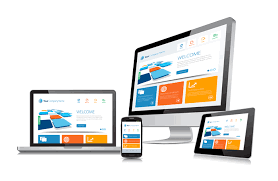Online presence of a company is just as important as physical operations in the digital age. The WordPress Web Developer is at the core of this digital presence, acting as a storefront, a brand ambassador and primarily interacting portal with clients. The design and development of a website are therefore essential to creating an engaging online experience. This field requires not only aesthetic creativity, but also technical expertise. It is a blend of art and technology.

Design: When Creativity and Strategy Meet
The aesthetics of website design includes the layout, color scheme and typography. A design that is appealing visually, user-friendly and in line with the brand identity is effective. Modern design principles are based on minimalism, simplicity, and intuitive navigation. This ensures that users can easily find information and stay engaged. Responsive design is also important, as it allows sites to adapt to different devices from desktops to mobiles without compromising the user experience.
Understanding user experience (UX), and user interface design (UI), is also important for the strategic side of design. UX design focuses more on the overall experience while UI design focuses more on how the interface looks. To combine these elements successfully, you need to conduct thorough research. This includes understanding user behavior, creating user personas and testing prototypes. Wireframing, user journey mapping and other tools have become essential in this phase. They allow designers to optimize and visualize the user experience prior to actual development.
Development is the Backbone of Functionality
The development phase is where visual concepts are translated into code. Developers choose the right technologies and frameworks for the website. The site’s complexity, functionality, and coding language will determine the choice of coding languages, including HTML, CSS or JavaScript.
Back-end development is focused on server-side functionality. Back-end development involves the configuration of databases, servers, and site architecture. For features such as user authentication, database interaction, and dynamically generated content, robust back-end systems will be required. Front-end development ensures the site’s interface is smooth and contains the visuals, interactivity, and other features designed during the initial phase.
Security is also a key consideration. Security protocols must be integrated by developers to ensure data is protected and the site free of vulnerabilities. In addition, SEO (Search Engine Optimization), accessibility, and other factors need to be considered during the development phase. These affect how the site will be indexed by the search engines, and whether it is accessible to users with disabilities.
Conclusion: A Continual Process
The design and development of a website doesn’t stop with its launch. This is a continuous process that includes regular updates, maintenance and improvements based upon user feedback and technological advances. Businesses must stay competitive by adapting to the constantly changing design trends and expectations of consumers. They should also ensure that their websites are up-to-date with current standards, but also anticipate future trends.
The creation of a dynamic and detailed website requires both artistic vision as well as technical expertise. Businesses can build engaging and effective digital platforms by mastering both the design and the development processes.